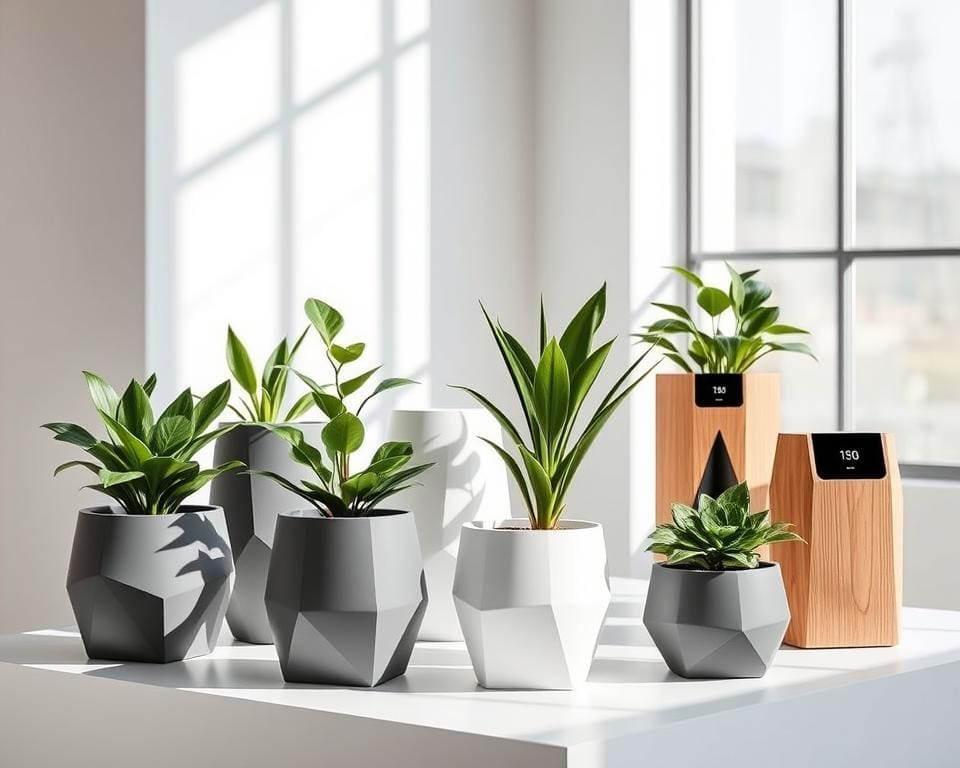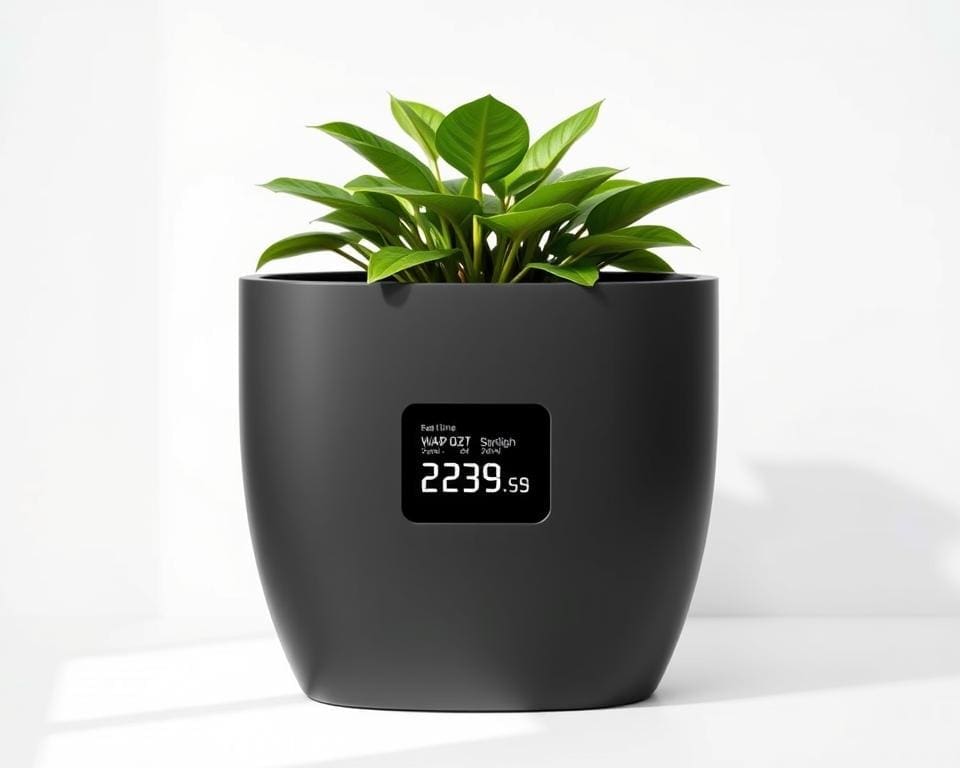As the realms of technology and gardening converge, smart plant pots have emerged as an alluring solution for indoor gardening enthusiasts. These innovative devices promise to revolutionise the way we care for our plants, offering a seamless blend of convenience and efficiency. With their capacity to automate key aspects of plant care, smart plant pots are capturing the attention of tech-savvy gardeners looking to enhance their green spaces. But the pressing question remains: are smart plant pots worth the investment? In this article, we will explore the growing popularity of these gadgets, examining their design, functionality, and the myriad benefits they offer to anyone passionate about nurturing plant life.
The Rise of Smart Plant Pots
The evolution of smart plant pots has brought forth remarkable advancements in plant technology, making gardening more accessible and enjoyable for all. As urban living continues to grow, these intelligent solutions cater to those desiring greenery in their homes while managing limited time and space.
Innovations in Plant Technology
Brands like Click and Grow and Parrot have developed cutting-edge systems designed to transform the gardening experience. With features that automate critical aspects of plant care, these smart plant pots handle tasks such as watering, light exposure, and nutrient delivery with precision. This automation liberates individuals from the more labour-intensive aspects of gardening, allowing them to focus on enjoying the beauty of their indoor gardens.
How Smart Home Devices Are Changing Indoor Gardening
Integrating smart plant pots with existing smart home devices opens up a new realm of possibilities. Users can control their garden environment from their smartphones, enabling real-time adjustments based on specific plant needs. With sensor technology that monitors moisture levels, temperature, and light conditions, gardening becomes a seamless activity suited to both seasoned green thumbs and novices alike. The combination of plant technology with smart home systems fosters healthier, thriving plants without the constant oversight traditionally required.

Are Smart Plant Pots Worth the Investment?
As the popularity of smart plant pots continues to rise, many gardeners ponder whether these innovative tools truly justify their price tags. Investing in smart plant pots invites an examination of their costs compared to the benefits they provide.
Cost vs. Benefits of Smart Plant Pots
Smart plant pots come in a variety of price ranges, accommodating both budget-conscious individuals and those willing to splurge on high-end models. An initial analysis reveals that while the upfront expenses can seem daunting, the long-term advantages often make these smart solutions appealing. Enhanced plant health and lower maintenance requirements frequently outweigh the initial cost. By using smart plant pots, gardeners may enjoy a larger yield and reduced waste, which contributes to overall savings.
Long-Term Savings on Plant Care
Consider the potential financial benefits of utilising smart plant pots. With their automated features like self-watering and nutrient management, these pots lessen the need for time-consuming attention. This automation not only frees up valuable hours but can also lead to healthier plants. Healthier plants thrive better, ultimately offering better returns for novice and experienced gardeners alike. Are smart plant pots worth the investment? In many cases, the answer leans towards a resounding yes, given the long-term savings and satisfaction they deliver.
Key Features of Smart Plant Pots
Smart plant pots offer a range of innovative features designed to simplify plant care while enhancing the overall gardening experience. These plant pot features cater to both seasoned gardeners and novices, ensuring that plants thrive effortlessly.
Automated Watering Systems
The introduction of automated watering systems represents a revolutionary step in plant care. These meticulously crafted systems remove the uncertainty associated with watering schedules. Whether it involves self-watering reservoirs or advanced connected systems, automatic watering triggers based on soil moisture levels guarantee that plants receive consistent hydration. This not only promotes healthy growth but also significantly reduces the time spent on daily maintenance.
Soil and Nutrient Monitoring
Another essential aspect of smart plant pots is the capability for soil and nutrient monitoring. Equipped with sensors, these pots provide real-time data regarding the soil’s pH levels, moisture content, and nutrient availability. Such information empowers gardeners to make informed decisions to enhance plant health, preventing over-fertilisation or nutrient deficiencies.
Integration with Home Automation Systems
With smart home integration, plant care becomes an effortless part of daily routines. Many of these pots can sync with home automation systems, allowing for customised care schedules and notifications directly to your smartphone. This seamless connectivity transforms gardening into a hassle-free experience, harmonising with other smart devices in your home.
The Benefits of Plant Care Automation
In the modern world, many gardeners face the challenge of limited time amidst their busy lives. Embracing plant care automation offers a practical solution, allowing individuals to maintain their green spaces without compromising other commitments. The efficiency of smart pots transforms gardening into an accessible hobby, increasing both enjoyment and productivity.
Time Savings for Busy Gardeners
The time savings for busy gardeners is a significant advantage of plant care automation. By utilising smart technology, tasks such as watering and nutrient distribution become automated, freeing up valuable moments for users to focus on other matters. Statistics indicate that gardeners can reclaim up to 50% of the time spent on these repetitive chores. This reclaimed time can be devoted to cultivating new plants, spending time with family or simply enjoying leisure activities.
Healthier Plants and Improved Growth
Not only does plant care automation offer convenience, but it also enhances the health and growth of the plants themselves. Sensors in smart pots monitor soil conditions, ensuring that plants receive the optimal amount of water and nutrients. This precision creates an environment in which plants thrive, resulting in greener leaves and more vibrant blooms. As a result, many gardeners have reported an increased sense of satisfaction as they witness their plants flourish with the aid of technology.
Choosing the Right Smart Plant Pot for You
With the rapid expansion of the smart plant pot market, selecting the ideal model can feel daunting. The first step in choosing the right smart plant pot is to consider the types of plants you wish to cultivate. Whether it’s herbs, succulents, or flowering plants influences what features you should prioritise. It’s essential to take stock of your space as well, ensuring that your chosen pot fits comfortably within your indoor environment.
Budget constraints also play a significant role in your decision-making process. Popular options, like the Xiaomi Smart Flower Pot and the Click and Grow Smart Garden, vary in both price and features. Evaluating each product’s specifications, such as automated watering systems and nutrient monitoring, will help you gauge their worth against your investment. Customer reviews can offer valuable insights into the performance and longevity of these smart plant pots, guiding you to make an informed choice.
Incorporating additional factors, such as ease of use and aesthetic appeal, will enhance your overall gardening experience. By thoughtfully considering your needs and researching available models, you can select the smart plant pot that perfectly aligns with your indoor gardening aspirations. This process will not only help you cultivate healthy plants but also elevate the enjoyment of nurturing your indoor green space.









